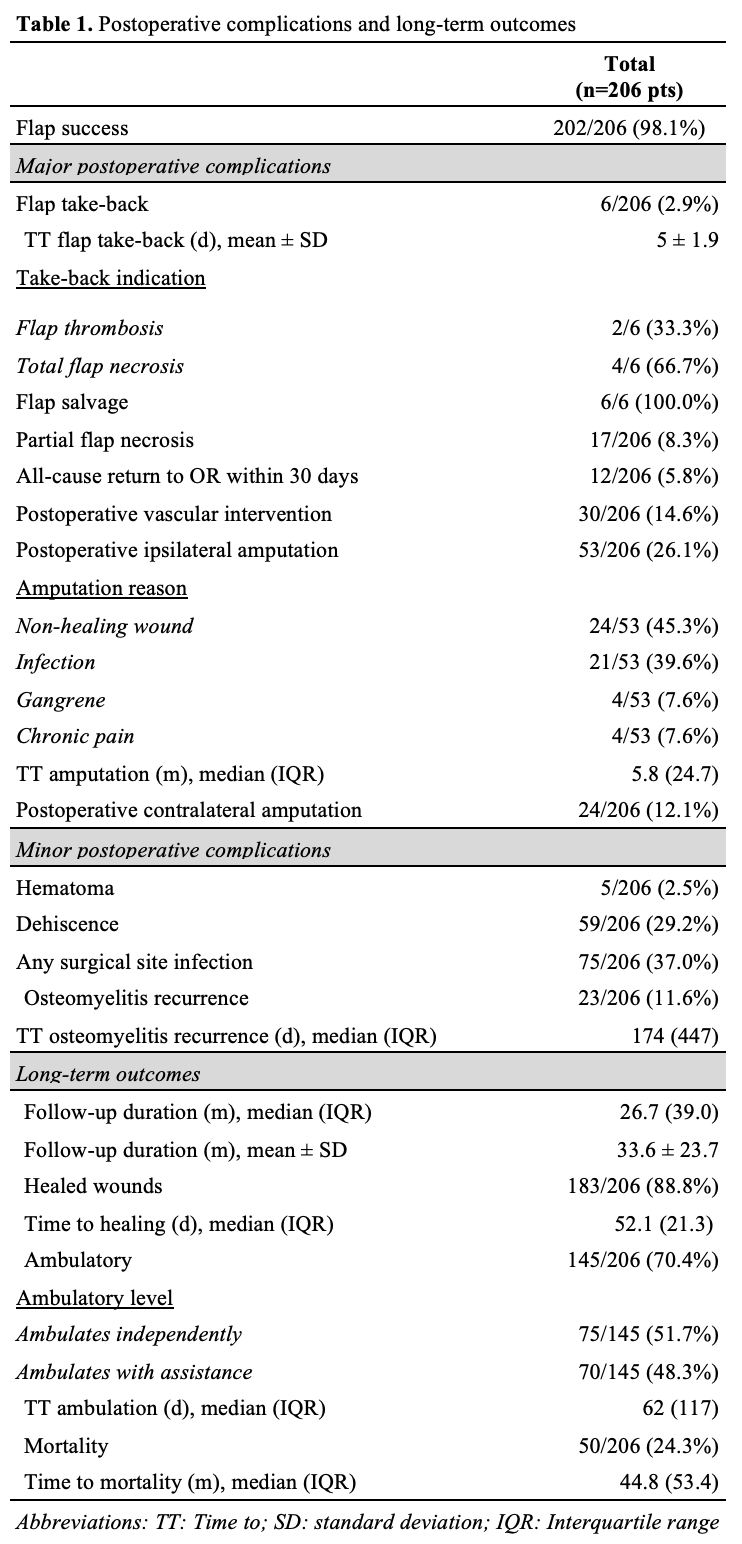The Role of Local Flaps in Foot and Ankle Reconstruction: An Assessment of Outcomes Across 206 Patients with Chronic Wounds
Lauren E. Berger*, Daisy L. Spoer, Samuel S. Huffman, Richard Garrett, Elias Khayat, John R. DiBello, Elizabeth G. Zolper, Cameron M. Akbari, Karen Evans, Christopher Attinger
Plastic and Reconstructive Surgery, MedStar Georgetown University Hospital, Washington,
The field of reconstructive surgery has experienced a paradigm shift in favor of microsurgical free tissue transfer (FTT) to the lower extremity. Yet, local flaps enable coverage of smaller defects without the cost and equipment required of FTT. Thus, we sought to perform a large, retrospective cohort study to better characterize long-term outcomes following local flaps of the foot and ankle.
A single-center, retrospective cohort study of patients undergoing local muscle and fasciocutaneous flaps of the foot and ankle between January 2010 and November 2022 was performed. Demographic and clinical data were collected.
A total of 206 patients met inclusion criteria. Median age was 61.0 years (IQR 16.8), and most patients were male (n=141, 68.4%). The most frequent comorbidities included diabetes mellitus (DM; n=149, 72.3%), and end-stage renal disease (ESRD; n=29, 14.1%). Patient presentations included chronic, non-healing wounds (n=77, 39.1%), osteomyelitis (n=45, 22.8%), or gangrene (n=38, 19.3%), with wounds most frequently extending to the level of bone (n=128, 62.1%). Eighty-seven patients (n=87, 42.2%) received muscle flaps, while 119 received fasciocutaneous flaps (n=119, 57.8%). Six patients (n=6, 2.9%) necessitated return to the operating room, with thrombosis occurring in two cases (n=2, 1.0%). Other complications included surgical site infection (n=75, 37.0%) and dehiscence (n=59, 29.2%). Flap success rate was 98.1%. By a median follow-up duration of 21.7 months (IQR 39.0), 53 patients (n=53, 26.1%) progressed to amputation, 70.4% of patients (n=145) were ambulatory, and 24.3% (n=50) were deceased. Multivariate analysis revealed positive predictors of postoperative outcomes included DM, ESRD, and prior histories of venous thromboembolism or smoking.
Local flaps remain a reliable option to reconstruct smaller defects of the foot and ankle with relatively low rates of postoperative complications in a highly comorbid population. Preoperative risk stratification should be performed to identify patients at higher risk of flap take-back and related complications.
Back to 2023 Abstracts


